|
If you’ve dealt with a skin condition, such as acne or eczema, you’ve probably tried a series of different skin regimens to help improve your skin. I know what it’s like. I’ve been there, struggling with eczema, which ultimately led me to a career change from biochemical research to naturopathic medicine. You see, no matter how much I diligently used my cortisone creams and moisturizers, it kept coming back, and I knew I needed to look deeper for the answers. I found the answers were not merely skin deep. The answers were in my gut!
Naturopathic medicine has long taught that skin conditions need to be addressed through the health of the gut, and that the gut and the skin are intimately connected. When you think about it, the inside of your digestive system is like an internal continuation of your external skin. We now know that a huge part, about 80%, of your immune system lies in your gut, and that many skin conditions are associated with a dysregulation of the immune system. Your gut is your first line of defense against pathogens, and regulates your immune system’s response to different foods, toxins, and micro-organisms. To have healthy skin from the inside out, you must first address the health of your gut! This is primarily how I address skin conditions in my practice, from the inside out, and I have seen great improvements in my patients’ skin conditions using this approach. Skin Conditions Associated With Digestive Issues If the link between digestive issues and skin conditions is real, we would expect to see a strong correlation between digestive diseases and skin conditions. And we do see this. For example: -Acne rosacea, an inflammatory condition of the skin on the face, is associated with a higher prevalence of gastrointestinal complaints (including Celiac disease, Crohn’s Disease, Ulcerative Colitis, H. pylori infection, Small Intestinal Bacterial Overgrowth (SIBO), and Irritable Bowel Syndrome (IBS)) than in the general population (Egeberg et al., 2017). -Eczema and other rashes have been associated with reactions to certain foods, including in a condition called Non-Celiac Gluten Sensitivity (Elli et al., 2015). -Dermatitis herpetiformis is a skin condition found in ¼ of patients with Celiac disease (Kresser, 2012) The Leaky Gut, Leaky Skin Connection We now know that chronic inflammation and damage to the gut lining can lead to a state of intestinal hyperpermeability, where food particles and microbial toxins that shouldn’t get through do get through, leading to what we call a “leaky gut”. This damage could happen as a result of many things, including food sensitivities, genetically modified foods, an imbalance in gut flora (the microbes in the gut), infections, and chronic stress. Many of these things worsen skin conditions as well. Stress not only impacts the gut barrier, it also makes the skin barrier more permeable, which is why you may experience a worsening of your skin condition when you are particularly stressed (Slominski, 2007). If the gut is leaky, this also influences the immunity of the skin, making it produce less protective anti-microbial peptides. Another aspect of the gut-skin connection, which I will address in a later blog, has to do with detoxification. If the gut, a primary organ of detoxification, is compromised, then the body will try and detoxify through other means, including the secondary detoxification systems, which includes the skin. Treating The Gut Improves The Skin Treating skin conditions definitely requires a multi-faceted approach. However, in my practice and in my own personal experience with eczema, I have seen a tremendous improvement in skin conditions by addressing the health of the gut first and foremost. For example, including probiotics in the diet, either through fermented dairy or through probiotics, can significantly improve the severity of acne vulgaris. Treating SIBO in a patient with acne rosacea is likely to improve their rosacea symptoms. Removing gluten in the diet usually resolves dermatitis herpetiformis. So why just stick to skin deep treatments when you can address the root cause(s) of your skin condition? Changing my diet and healing my leaky gut has been extremely important in helping me minimize my eczema. A similar approach has helped countless of my patients, and I’d love to help you too! References Egeberg A., Weinstock L.B., Thyssen E.P., Gislason G.H., Thyssen J.P. (2017). Rosacea and gastrointestinal disorders: a population-based cohort study. Br J Dermatol., 2017 Jan;176(1):100-106. doi: 10.1111/bjd.14930. Elli L., Branchi F., Tomba C., Villalta D., Norsa L., Ferreti F., Roncoroni L., Bardella M.T. (2015). Diagnosis of gluten related disorders: Celiac disease, wheat allergy and non-celiac gluten sensitivity. World J Gastroenterol., 2015 Jun 21;21(23):7110-7119.doi: 10.3748/wjg.v21.i23.7110 Kresser C. (2012). The gut-skin connection: how altered gut function affects the skin. Chris Kresser. Retrieved from: https://chriskresser.com/the-gut-skin-connection-how-altered-gut-function-affects-the-skin/ Slominski A. (2007). A nervous breakdown in the skin: stress and the epidermal barrier. J Clin Invest. 2007 Nov 1; 117(11): 3166–3169. doi: 10.1172/JCI33508
0 Comments
We’re heading into the Christmas holidays, where parties, friends, and family abound, and gifts and hugs are shared. Unfortunately, these close quarters are also prime opportunities for the flu and other viruses to be shared among us. If our immune systems are compromised with our lack of sunlight at this time of the year (and therefore low Vitamin D), and further taxed by lack of sleep, stress, alcohol, sweets, dry heated environments, and lack of exercise, we can be more susceptible to coming down with the flu.
So what’s the scoop on Vitamin D, and can it help you prevent and/or treat the flu? Low Vitamin D levels are associated with higher flu rates. There are many studies showing that deficient levels of Vitamin D are associated with higher rates of flus and respiratory tract infections. Now, keep in mind that just because there is a correlation, it doesn’t mean that the lack of Vitamin D is actually causing the increase in flus, and it’s definitely not the only factor. But clinically, we do see that optimizing Vitamin D levels and correcting deficiencies generally decreases patients’ frequency of getting sick with the flu. Vitamin D supplementation has been studied in the context of preventing one kind of influenza, influenza A. It was found that supplementing with Vitamin D decreased influenza A flus in schoolchildren, with the added bonus of decreasing asthma rates in those susceptible (Urashima et al., 2010). Optimize Your Vitamin D Levels I frequently test my patients for their Vitamin D levels in the blood (25-0H Vitamin D), and very rarely are they adequate, even in those that are taking 1000-2000 IU of vitamin D on a daily basis! So often, if your levels were very deficient to start with, blindly taking the recommended intake won’t help very much. You also don't want to take too much and overdose! The average blood level of Vitamin D in Canadians is below 75 nmol/L (the lower end of the “normal” range), and 1/3 of those people are likely quite deficient, with levels below 50 nmol/L. Levels in the winter are even lower than that! I aim not only for normal ranges, but optimal ranges for my patients. This usually requires prescription level doses of Vitamin D (>1000 IU a day), which I can prescribe. Getting your levels checked can allow me to dose your Vitamin D appropriately and safely, bringing your levels up quickly and efficiently. Vitamin D is also important for so many other things, including bone health, mood, and energy! Treatment Of Flu With “The Vitamin D Hammer” Most of us have come down with the flu at some point or another, and we know it can make us feel quite miserable. What if you could cut that misery short? Can Vitamin D help once you already have the flu? There isn’t much research in the area. However, there is some evidence clinically from doctors who use high doses of Vitamin D that it can be very helpful. We’re not talking about 800-1000 IU a day in these instances, as this likely would be too little, too late for most people. Dr. Gerry Schwalfenberg, MD, and his colleague use very high doses of Vitamin D (we’re talking high prescription doses) at the onset of the flu for 2-3 days. They call this “the Vitamin D hammer”, flooding the body with Vitamin D short-term! With this protocol, they find that patients’ symptoms resolve within 48-72 hours, which is amazing considering that the usual flu will often last a week or more, and can be followed by feeling weak and rundown for a while still afterwards. Do you want to minimize your chances of getting the flu? Then among your arsenal, a good personalized dose of Vitamin D would probably be a good idea. We can get you tested to optimize your levels, and include other immune-boosting measures and supplements into your treatment plan so that you keep up your energy and smile all winter long! References Schwalfenberg G. (2015). Vitamin D for influenza. Can Fam Physician, 2015 Jun; 61(6):507. https://www.ncbi.nlm.nih.gov/pmc/articles/PMC4463890/ Urashima M., Segawa T., Okazaki M., Kurihara M., Wada Y., and Ida H. (2010). Randomized trial of vitamin D supplementation to prevent seasonal influenza A in schoolchildren. Am J Clin Nutr, 2010 May;91(5):1255-60. doi: 10.3945/ajcn.2009.29094. Epub 2010 Mar 10. Dealing with the symptoms of irritable bowel syndrome (bloating, gas, diarrhea or constipation or both, a tender or painful abdomen, and a sensitive stomach) can be exhausting! If you are an IBS sufferer, you probably have tried several things in an attempt to manage your symptoms. The cause of IBS can be different for different people, so what may work for others may not work for you!
Here are 5 things you can begin doing now if you have IBS, which can start to get you on the right track to manage your symptoms. 1) Start a diet diary Being aware of what you put in your body and how you react to your food can be an important first step to help you identify if specific foods are a trigger for your symptoms. Most IBS patients have IgG food sensitivities, which can lead to symptoms anytime from eating the food, up to 72hrs after. Write down everything you eat every day for a week, along with the timing of any symptoms you may have. Then, go back and highlight when you ate foods that tend to be triggers: wheat and gluten, cow’s dairy, eggs, soy, corn, yeast, and high FODMAPs foods. Can you see a pattern between what you eat and your symptoms? If things get confusing, bring in your diet diary to your appointment with me, and we can discuss the best avenue to proceed with. Food sensitivity testing may be a good option, or my 7-Day Detox Program. 2) Take a good quality probiotic Did you know that about 3lbs of your weight is due to the crucial bacteria that you carry around in your gut? These bacteria need to be in a fine balance in order to play their role in decreasing your reactions to foods, maintaining a good intestinal barrier, keeping your immune system strong and balanced, and even improving your mood! Each strain of probiotic has its own effects on the immune system, so formulas can get pretty specific. Most of the time, I usually recommend a probiotic blend that includes Lactobacillus acidophilus, Bifidobacterium longus, and Bifidobacterium lactis. If you feel worse on a probiotic, stop taking it and talk to a naturopathic doctor. It could be a sign of something that’s going on in your body, such as a dairy allergy, a FODMAPs sensitivity (depending on what is included in the probiotic), or an overgrowth of bacteria in the small intestine (SIBO). 3) Introduce a regular exercise routine You may not feel like exercising if your IBS symptoms are severe, but if you can, start small but get moving! Exercise has been shown to significantly improve the quality of life of patients with IBS. Exercise helps keep your bowels regular, changes gas transit time in the intestines, improves mood, and overall makes people feel better! A regular exercise routine is good not only for IBS symptoms, but also for overall health. Why not give it a try? 4) Cut out lactose from your diet Since lactose intolerance is common in people with IBS, and can be confused with IBS, try cutting out lactose in your diet for 1-2 weeks. That means trying lactose-free milk, yoghurt, cheese and other dairy products instead of the regular cow’s dairy products. If your symptoms resolve, then you’ve got your culprit, lactose! However, if your symptoms get better but aren’t completely gone, then you may be lactose intolerant but still have other things going on at the same time. Often times, patients with IBS cannot tolerate casein, a protein in milk products which is found in both regular and lactose-free dairy products. 5) Eat real food Remove the processed and sugar-laden foods from your grocery cart, and instead shop mostly the perimeter of the grocery store, where the fresh produce is found (skip the bakery isle if it is found there too). That way, you will be eating nutritious food that is naturally high in fibre, and you’ll be avoiding the sugar which feeds unhealthy bacteria in the gut. If your digestive system is currently very sensitive, you may want to eat more liquid foods in the form of home-made soups, stews, or smoothies. Just keep in mind that you could react to some of the foods listed in Tip #1. Starting to implement some of these tips should help you get some relief from your IBS symptoms. However, it’s always best to work with your naturopathic doctor if you want to feel better faster and avoid much of the guesswork. Some critical tests can really help pinpoint the treatment that you need, and specific naturopathic treatments and supplements can speed up your healing process. Helping patients with IBS is a passion of mine. If you are ready to get lasting relief from your IBS symptoms, I’ll be delighted to help you! References Cuomo R., Andreozzi P., Zito F.P., Passananti V., De Carlo G., Sarnelli G. (2014). Irritable bowel syndrome and food interaction. World J Gastroenterol., 2014 Jul 21;20(27):8837-45. doi: 10.3748/wjg.v20.i27.8837. Johannesson E., Simrén M., Strid H., Bajor A., and Sadik R. (2011). Physical activity improves symptoms in irritable bowel syndrome: a randomized controlled trial. Am J Gastroenterol., 2011 May;106(5):915-22. doi: 10.1038/ajg.2010.480. Epub 2011 Jan 4. If you’ve been suffering from irritable bowel syndrome (IBS) and want to get to the bottom of your symptoms, there are some crucial tests that you may want to consider running through your naturopathic doctor. You’ve probably tried many different things already to help with your symptoms through trial and error, without significant or lasting relief. Testing eliminates much of the guesswork and helps us target our treatment so that you can get better faster!
During your initial visit with me, your medical history will give us a clue to what might be causing your symptoms. It could be one of the ones outlined in my previous blog. I’m giving you a list of the most common tests to consider, but most people only need to invest in one or two of these tests. By far, the most common test that I run with IBS patients is the first one, IgG Food Sensitivity Testing. 1) IgG Food Sensitivity Testing This is a blood test that measures levels of IgG antibodies to 120-200 foods, depending on which panel we run. It allows us to identify objectively which foods are the most likely to be causing the most inflammation in your digestive system. If we run this test, you will receive a printout of which foods you reacted to highly, moderately, or not at all. If you end up having a large number of reactive foods, you most likely have a condition called leaky gut, where the intestinal barrier becomes excessively permeable, leading to reactions to many foods. Repairing that leaky gut through naturopathic treatments can often allow you to eventually bring more foods back into your diet. 2) Candida IgG Test This is also a blood test, and can be added on to the IgG Food Sensitivity Test, or run on its own. It would be run if we suspect a yeast or Candida overgrowth which could contribute to IBS-like symptoms. If your results turn out positive, then we would treat the overgrowth with dietary changes and targeted supplements. 3) SIBO Breath Test Unlike the two tests above, this test is a breath test. You are given a lactulose solution to drink, and at timed intervals, take breath samples in the comfort of your home. The lactulose feeds bacteria in your intestine, and they will then produce hydrogen and/or methane gases as they break the lactulose down. These are the gases that are measured in your breath. If unusually high levels of those gases are found in your samples, you probably have Small Intestinal Bacterial Overgrowth (SIBO), a common cause of IBS. There is a multi-step process to treat SIBO, but the good news is that it CAN be treated! 4) Comprehensive Stool Analysis (+/- Parasitology) This test requires a stool sample, usually taken from 3 different bowel movements. It gives a comprehensive assessment of your digestive health, including which bacteria (beneficial and harmful) are present and their relative amounts, any yeast overgrowth, parasites, and other information on how well your digestive system is working. If we suspect parasites, this would be the test to run, but it can also be run if we suspect an imbalance in the beneficial bacteria in your digestive system, or if your digestive system is a mess. If you’ve been suffering from IBS symptoms for a while, testing could be a lifesaver, preventing you years of trial and error with different supplements and medications! Ready to start feeling better now? Book your initial visit with me today, and we’ll start investigating so that you can get to the bottom of your IBS. In health, Dr. Tamar Reference Image from 123RF.com In my last blog, I shared with you some background information about what a diagnosis of irritable bowel syndrome, or IBS, means. The symptoms and diagnosis are just the tip of the iceberg. The bottom line is, if you’ve been diagnosed with IBS, you will want to dig deeper in order to find out what is causing your symptoms, and modify the factors you CAN control in order to get your symptoms under control.
I’ve had countless patients go from having daily diarrhea and bloating to having happy bowels that no longer cause them daily anxiety and stress, once we find and treat the cause! This is a very personalized process, as what causes IBS for one person doesn’t necessarily cause it for another. Additionally, many times there is not just one cause, but a combination of factors that must be addressed. When a patient comes in to see me with IBS, I have a running list of possible causes going through my mind, trying to fit the pieces of the puzzle together for that person as I listen to their particular story. Here are the top 5 causes of IBS that I consider. This list is by no means exhaustive! Working with a naturopathic doctor and ordering the appropriate testing will help you get long-lasting relief for your symptoms! 1) Food Sensitivities Many patients’ IBS symptoms resolve or significantly improve after we identify specific problematic foods, either through IgG food sensitivity testing, or through an elimination diet. Food sensitivities can cause IBS symptoms since they increase inflammation in the gut and irritate the gut lining. It can be difficult to identify your food sensitivities just by keeping a diet diary, since you can notice digestive symptoms from a food up to 72hrs after eating it! The most common problematic foods tend to be gluten, dairy, eggs, corn, and soy. 2) Small Intestinal Bacterial Overgrowth (SIBO) Bacteria can overgrow in the small intestine, as a result of many things, including lots of antibiotics, low stomach acid, and a dysfunction in the movement of muscles surrounding the intestines. It’s actually a very common cause of IBS, being present in from 35-80% of IBS cases! If your IBS symptoms come with lots of bloating, you’ve been on strong antibiotics or antacids, and probiotics make you feel worse, it might be a good idea to get tested for SIBO. 3) Lactose Intolerance Many people figure this one out by trial and error, as drinking a glass of milk makes them run to the washroom within half an hour. However, many people go undiagnosed for years, as the symptoms can be just shrugged off as IBS. There is a test available for this as well, if you’re unsure. 4) Yeast Overgrowth Just like bacteria can overgrow in the digestive system, so can yeast! Candida albicans is a yeast that is commonly found in the digestive tract in small amounts, but if the opportunity arises, it can overgrow and cause a variety of symptoms that can fall under the umbrella of IBS. The most typical triggers for Candida overgrowth are chronic antibiotic use and/or a diet high in sugar, but there are others, including chronic stress and the use of the birth control pill. If you’re a woman and have IBS symptoms along with frequent vaginal yeast infections, getting tested for Candida overgrowth would be an important step to find out if it’s causing your IBS symptoms. 5) FODMAPs Intolerance FODMAPs foods are made up certain types of sugars and short chain carbohydrates that can be difficult to digest. The acronym stands for Fermentable-Oligosaccharide-Disaccharide-Monosaccharide-And-Polyols. Unlike food sensitivities that are due to a reaction to the protein portion of a food, in this case, you may be unable to break down and digest the carbohydrate portion of certain foods. Avoiding high FODMAPs foods has been shown to improve IBS symptoms. Sometimes, however, patients cannot tolerate these foods because they already have an overgrowth of certain bacteria or yeast which thrive on these foods and ferment them to create more gas! See how different causes can be related? There are many other factors which cause or aggravate IBS, including chronic stress, low stomach acid, chronic use of certain analgesics, and a dysfunction in the action of the muscles surrounding your digestive tract (the migrating motor complex). Do you want to get to the bottom of your IBS symptoms? In the next blog, I’ll be discussing in more detail about what crucial tests you should consider if you’ve been diagnosed with IBS. References Image from 123RF.com <a href='http://www.123rf.com/profile_oporkka'>oporkka / 123RF Stock Photo</a> Atkinson, W., Sheldon, T.A., Shaath, N., and P.J. Whorwell. (2003). Food elimination based on IgG antibodies in irritable bowel syndrome: A randomized controlled trial. Gut, 53:1459–1464. http://gut.bmj.com/content/53/10/1459.full.pdf Dainese R1, Casellas F, Mariné-Barjoan E, Vivinus-Nébot M, Schneider SM, Hébuterne X, Piche T. (2014). Perception of lactose intolerance in irritable bowel syndrome patients. Eur J Gastroenterol Hepatol., 2014 Oct;26(10):1167-7. https://www.ncbi.nlm.nih.gov/pubmed/25089542 Halmos EP1, Power VA2, Shepherd SJ2, Gibson PR3, Muir JG3.(2014). A diet low in FODMAPs reduces symptoms of irritable bowel syndrome. Gastroenterology, 2014 Jan;146(1):67-75.e5. https://www.ncbi.nlm.nih.gov/pubmed/24076059 Mann, N.S., and Limoges-Gonzales, M. (2009). The prevalence of small intestinal bacterial overgrowth in irritable bowel syndrome. Hepatogastroenterology, 2009 May-Jun;56(91-92):718-21. https://www.ncbi.nlm.nih.gov/pubmed/19621689 You plan your trips based on the nearest washroom. You’ve limited what you eat because you’re constantly feeling bloated, gassy, or your tummy aches. You have diarrhea or constipation, or both! Your energy is down the drain from constantly dealing with your digestive issues. If you’re a woman, you may notice worse symptoms around the time of your period. You might be anxious or depressed because this is taking such a toll on you and nothing you do seems to work. You’ve limited your social life because you don’t feel energetic or you can’t eat out without feeling horrible afterwards... If you have IBS (irritable bowel syndrome), then you can probably relate!
If you’re at your wits’ end and you’re about to give up, don’t! There’s a lot we can do to help you feel better! And, contrary to what you may have been told, it’s not all in your head. Irritable bowel syndrome – it sounds harmless enough, but for those that deal with it on a daily basis, it has a serious impact on their quality of life. So many people have it (2.1-22% of the population, that’s almost a ¼ of the population!), yet most people have no clue what they can do about it and think they just have to “live with it”. It’s one of the most common conditions that I treat in my Nepean and Orleans practices. You may have been diagnosed with IBS, or you may be struggling with chronic digestive issues and be one of the 75% of people that goes undiagnosed. If you’re a woman, you’re 1.5-2x more likely to have it! While a diagnosis is helpful to give your digestive troubles a name, unfortunately it doesn’t give your healthcare professionals a clear-cut answer to treating it. Why? Because a diagnosis of IBS doesn’t tell you anything about what’s actually causing it! You might have chronic digestive issues, but you haven’t been diagnosed with IBS by your doctor. Could you still have IBS? Yes you could! IBS describes a group of symptoms commonly found together that are going on for a period of time, at least 3 months to be exact. If you have these symptoms, you likely have IBS (Rome III criteria): -For at least the past 3 months, you have had recurrent abdominal pain (it is often described as discomfort, not necessarily pain) -These abdominal symptoms have to be present at least 3 days a week during the past 3 months -These abdominal symptoms have to be accompanied by at least 2 of these 3 criteria:
That means that, if you’ve gotten a diagnosis through your medical doctor, your doctor has probably ruled out more serious conditions, such as Celiac disease, Crohn’s disease, ulcerative colitis, or colon cancer. You may have had a scope done to have a closer look at your bowels (likely a colonoscopy and possibly an endoscopy), but nothing abnormal could be found, except perhaps some spasticity in the muscles surrounding the digestive tract. You can breathe a sigh of relief that these more serious conditions are not likely playing a role in your symptoms. But that doesn’t change the fact that your symptoms are still with you! So, what a diagnosis of IBS tells you is that you have to dig deeper to find out what’s causing it if you want to get better for good. The good news is that I can help you with that! In the next few blogs, I’ll be discussing what the possible causes of IBS are, common testing that I run with patients to guide their treatment, and things you can start doing to feel better. If you want to start feeling better now, make sure to book an initial visit here with me. As I mentioned earlier, helping patients with IBS is a huge part of my Ottawa practice, and it would be a privilege to help you too! In health, Dr. Tamar References: Image from 123RF.com Yoon, S.L., Grundmann, O, Koepp, L, and Farrell, L. (2011). Management of irritable bowel syndrome (IBS) in adults: conventional and complementary/alternative approaches. Altern Med Rev, 2011 Jun; 16(2): 134-51. https://www.ncbi.nlm.nih.gov/pubmed/21649455  I love spending time in nature, so taking walks and hikes in the outdoors comes easily to me. Running? Not so much. But this summer and fall, I chose to learn to run. Why did I choose running? It was an activity I could commit to on my own that would get me outdoors, many of my patients loved it, it was a quick way to feel energized, and it looked easy... As easy as it looked with all of the spandex-clad professional runners in my neighbourhood gliding by effortlessly, I soon discovered that running takes a lot more work and perseverance than I’d imagined. Like any new skill, it takes time to learn and ingrain into your daily schedule before it becomes almost second nature. I’d tried running in the past, but never seemed to be able to push through the barrier of feeling that exhilarating rush of endorphins rewarding me. I only knew to expect the stretch of lungs nearly exploding or a painful side stitch after only a few minutes in. But this summer was different. This summer, I had a goal. I was going to run a 5K. Seems easy, right? I had bought myself a new pair of runners last year (after an assessment with a chiropractor) , so I already had the best pair of shoes I had ever owned, only lightly used since last year. I was inspired by patients who were running in the Ottawa Race Weekend in May. And, I had just gotten a new phone in June, which propelled me into the “new” world of app technology, and downloaded one of my first apps, the Couch Potato to 5K app. This app was a lifesaver for me, as it broke my 5K goal into small, manageable steps of 3 workouts a week for 8 weeks. So off I went on my first day. I passed by seasoned runners and felt like a fake when I zoomed by someone during my 1min running spurts (only to turn the corner and go back to walking), but at least I was running! The first few weeks were easy enough. I was alternating between walking and running, slowly increasing the length and frequency of the runs. When I felt like giving up, I would encourage myself to keep running until the lady on the app chimed in that it was time to walk again. The app was great for keeping me accountable and for pacing me so that I wouldn’t try to do too much too fast! By the end of the second week, I was already starting to feel good after my runs. I could feel my lung capacity expanding, my confidence growing, and felt energized after my runs (not exhausted like I had after my previous attempts years ago)! And that was after only a total of 9 minutes of running! My goal was to run non-stop for 35 minutes. By week 5, I was running at least 6 minutes straight, and enjoying it! I was proudly telling my friends and colleagues that I was running a total of 16 minutes. However, I had a setback during my two weeks of vacation, when I fell out of my usual routine and didn’t make time for running. Following that, I had a few busy weeks where I kept running on the back burner... Since I had told so many people about my running goal, however, they started to ask me how my running was going. Those promptings helped me to pick up my running shoes once again and hit the pavement. I was a little apprehensive about hitting the road again after a few weeks, as I didn’t know if I’d have to go backwards in my running regimen. I was surprised that all I had to do was repeat one workout before I felt good enough to continue right where I had left off! The last few weeks were tough, I admit, especially when moving from 10 minute running intervals with a 5 minute walking break, to 20 minutes of running non-stop. But once I hit the 20 minute mark, continuing to run a bit longer was not as big of a mountain as it once seemed! I hit my 35 minute running goal on October 5th, and was so proud of myself! And today, I finally hit my 5K non-stop running goal, with my best pace so far! I’m definitely not done running, but I wanted to share some of the things that I learned about forming new healthy habits through my running experience so far. This doesn’t only apply to running! It can apply to any health goal or new habit that you want to form for yourself. 1) Break your big goal into small, bite-sized, micro-goals Sure, it’s great to have a big goal and to dream big. But it’s the day-to-day effort, in which you may not see much progress, which gets you there. Every single day, you have to make decisions that will either help move you towards that goal, or away from it. The key, I have found, is to break the goal into so small chunks that you have almost no resistance to swallowing them! Dream big and visualize your end goal, but start small so that you don’t overwhelm yourself. For me, following the app I used helped me to break my effort down into manageable chunks which only required my time 3 days of the week. 2) Identify your obstacles (so that you can come up with solutions to overcome them) If you can’t keep up with your micro-goals, don’t give up! Keep reassessing and take a minute to analyze what is stopping you from reaching them. Are you going to sleep too late and can no longer get up early for your run? Then work on changing your bedtime routine. Are you developing knee pain? Get assessed with a chiropractor or osteopath to make sure that you are running correctly and do the proper strengthening exercises (I had this happen and got some great advice from Dr. Pelletier). You may need to adjust your micro-goals to be more realistic, or remove other non-essential habits that are taking your time from your daily routine. Perhaps you need to change the negative soundtrack in your head that is telling you that you can’t do this or that you will fail. Change is difficult, but the right type of change is worth it! Don’t give up! 3) Have an accountability buddy Share your goals with friends that will be supportive in helping you reach them. Having an accountability buddy can really help you get out there when you really don’t feel like it. As you head outside, you’ll hear their encouraging cheers fueling you along when your own cheers start to fade. This is also a role that your naturopathic doctor can play in helping you reach your health goals! We help keep you on track so that you can reach your health goals quicker and easier. 4) Attach your new habit to an old one I often tell my patients who forget to take their Vitamin D drops to keep them next to their toothbrush (one of the brands I recommend is also appropriately peppermint flavoured). That way, each time that they brush their teeth in the morning (an already established habit), they will have the cue they need to remember to take their Vitamin D. In the running example, attach your new habit to an existing one. For example, “after I get up in the morning and before I shower, I will go for a run on Mondays, Wednesdays, and Fridays”. These contextual cues can help you have a built-in reminder to stick to your new habit. 5) Redefine success = effort It’s easy to give up when there are bumps along the way. In running, I had some days where I had less stamina and had to run much slower. It’s ok to not feel your best every time. You don’t have to do it perfectly every time. Remember why you are doing this (for your health and well-being), and that luckily we don’t have to run like a seasoned athlete to reap the benefits. Savour the process itself. Enjoy that split second you feel like you have wings under your feet lifting you off the ground. Breathe in the fresh air! Celebrate the fact that you have made the effort to go outside. After all, reaching your goal doesn’t happen overnight.It comes from a series of day-to-day efforts. Why not celebrate your efforts, your day-to-day successes? I hope that these 5 tips will help you to take the first step to build new health habits that stick! As you can see, a big part of the whole battle is a battle of the mind. And it’s not all about willpower either. Remember, make the transition to the new habit so easy that it’s almost impossible to say no. If you have plans to get healthier but don’t know how to get there or what that would look like for you, I’d be happy to be both your naturopathic doctor and your accountability buddy! Happy goal-setting! Dr. Tamar Most women that I see in my practice who are in their reproductive years suffer from premenstrual syndrome (PMS) to some extent. Actually, about 75% of women in this demographic experience PMS (Medline Plus, 2016). Does that make it normal? While a low level of discomfort can be expected (after all, there are huge hormonal changes occurring all at once within the week before your period), in many cases, more severe symptoms are pointing to underlying hormone imbalances or deficiencies that should be addressed. What Is PMS? PMS is generally defined as a group of symptoms that comes and goes cyclically based on where a woman is in her menstrual cycle. They usually will start in the second half of the cycle (at least 14 days after the start of a period in a woman with a textbook 28 day cycle), and will go away 1-2 days after menstruation starts (Medline Plus, 2016). Typical PMS symptoms can include one or more of the following:
-Bloating and/or increased gas -Breast tenderness -Changes in bowel movements, such as constipation or diarrhea -Headaches -Food cravings -Mood changes, such as heightened emotions, irritability, anxiety, or depression -Fatigue -Skin changes, such as cyclical acne Paying attention to these sometimes subtle changes can give you a clue about what imbalances you may have. The 4 Main Types Of PMS PMS is classified into 4 main types. If you fit primarily into one of these 4 main types, your naturopathic doctor will be able to gain valuable insight just from your symptoms! 1) PMS-A (Anxiety): This type of PMS is characterized by symptoms of increased anxiety, irritability, and emotional lability. What it means: PMS-A is usually associated with a high estrogen to progesterone ratio. Think of progesterone as the calming hormone between the two. If you don’t have enough of the calming hormone, estrogen will trigger the release of the more stimulating hormones, cortisol and adrenaline, which will make you feel more on edge. As well, if you’re on or have taken birth control pills in the past, you may have excess estrogen in your system, which can worsen these symptoms. Treatment options: Using natural strategies to increase progesterone (such as the herb Chaste Tree), get rid of excess estrogen, and decrease stress is very helpful for PMS-A sufferers. Increasing magnesium intake can also be helpful. If you have severe PMS-A symptoms, and especially if you are peri-menopausal, you may benefit from cyclical use (post ovulation) of bio-identical progesterone cream (which I can prescribe). 2) PMS-C (Cravings): If you experience strong cravings the week before your period, especially carbohydrate cravings, then you are probably suffering from PMS-C. You may also crave stimulants and chocolate, get heart palpitations, and you may get headaches and energy highs and lows from fluctuating blood sugar levels. What it means: These symptoms are thought to be due to changes in the way insulin binds. As a response to blood sugar in your bloodstream, your body produces insulin as a signal to bring the sugar into the cells. However, in the days leading up to a period, a woman’s cells become less sensitive to this insulin signal, leading to imbalances in blood sugar regulation. Giving in to sugar cravings can actually make PMS-C symptoms worse, since the body can’t deal with this influx of sugar properly. Treatment options: Stabilizing blood sugar with a high protein diet low in refined carbohydrates is really important if you suffer from PMS-C. These blood sugar imbalances can also show up as acne in the skin, since high sugar in the blood can lead to more breakouts. Eat small and frequent meals, and avoid alcohol. 3) PMS-D (Depression): If you feel really down before your period, you don’t feel like participating in your regular social activities, you feel grumpy, angry, or have crying spells before your period, you may suffer from PMS-D. If you have pre-existing depression, you might feel like your symptoms are worse leading up to your period. Another feature of this type of PMS is that it may be associated with premenstrual acne. What it means: The etiology of this type of PMS is like the reverse of PMS-A, with elevated progesterone levels, and low estrogen levels. While progesterone decreases anxiety, too much progesterone relative to estrogen can depress the nervous system, leading to symptoms of depression. As well, the happy neurotransmitter serotonin is decreased when estrogen levels are low, worsening feelings of depression. There also may be elevated testosterone levels, which can lead to increased acne. Treatment options: Some foods and herbs with phytoestrogenic activity can be used to balance estrogen levels. As well, if you have elevated androgens (hormones such as testosterone and DHT), these can be balanced using natural therapies. Including foods high in tryptophan (the precursor to the feel good hormone, serotonin) can help with mood: sour cherries, turkey, cottage cheese, and oats are all high in tryptophan (Pope, 2016). 4) PMS-H (Hyperhydration): If you routinely gain a few pounds before your period, your abdomen feels swollen, or your breasts get more swollen and tender, you are likely suffering from PMS-H. Rings on your hands may feel tighter if it also affects your extremities. What it means: The increased extracellular fluid which leads to symptoms of fluid retention is due to higher aldosterone levels. Aldosterone is a hormone produced by the adrenal glands that helps the body retain fluid. This can be compounded with lower dopamine levels typical in the days leading up to the period. Treatment options: Eating foods high in salt makes the body retain more water, so decreasing your salt intake and processed foods can help decrease the fluid retention. Increasing magnesium intake can also help reduce aldosterone levels and improve symptoms. What’s A Girl To Do? If you are tired of dealing monthly with your PMS symptoms, there is a better way than just pushing through it. Prominent PMS symptoms are signs for you to pay attention to the subtle imbalances in your body. The above treatment options will work for some but must be adapted to your particular case. Naturopathic doctors can help you balance your hormones with tools such as liver supporting and hormone balancing herbs, nutritional supplements, dietary changes, and acupuncture. In more complicated cases, we may need to run hormonal testing (blood or salivary) to find out exactly what we’re dealing with. If you want to get to the bottom of your PMS, I’d love to help. You can get in touch here. References: Image from: http://www.123rf.com/profile_rodimovpavel'>rodimovpavel / 123RF Stock Photo Kaslow JE (2016). Premenstrual Syndromes. Jeremy E. Kaslow, MD. Retrieved from http://www.drkaslow.com/html/premenstrual_syndromes.html. Pope N (2016). Naturopathic Infertility Treatments Timed With Cycle Charting. Webinar May 15, 2016. White CD (2016). Premenstrual Syndrome. Medline Plus. Retrieved from https://medlineplus.gov/ency/article/001505.htm. You may have heard of the term “detox”, but don’t really know what it entails. It may conjure up images of juicing or cayenne pepper cleanses, starvation diets, or even drug and alcohol addiction centres. This is NOT what I’ll be talking about today. I’ll be talking about metabolic detoxification: how you can maximize your own body’s cellular detoxification capabilities so that you can clean up the inside of your body and feel your best! You probably don’t think twice about cleaning up your outside: you brush your teeth, take a shower, wash your hair, cut your nails, etc. But what about the inside of your body? How does it deal with the onslaught of industrial chemicals, pesticides, hormone disruptors, heavy metals, and other substances that are foreign to it? How does it get rid of internal toxins, such as metabolic waste products, immune reactions to food, free radicals, and fermentation products from unhealthy gut bacteria? Detoxification – What Is It?
Luckily, our bodies have a built-in detoxification system that helps us get rid of the toxins we are exposed to. We are constantly detoxifying through this mechanism every second of our lives! However, just relying on that and going on your merry way is often not enough. “De-toxification” literally means to remove toxins, and in today’s society, we are exposed to more and more industrial chemicals, plastics, and hormone disruptors than ever before which “clog up” our detoxification mechanisms. A study done in 2009 found that the 10 minority ethnic group babies tested (this was a US study) were born with up to 232 toxic chemicals in their umbilical cord (EWG, 2009)! This number is likely higher than the average Canadian newborn, but showcases just how our toxicity is getting passed on to the next generation. In wholistic and integrative medicine, detoxification refers to a healing method used to improve physiological function by eliminating existing toxins, avoiding new toxins (as much as possible), and supporting the organs of elimination (primarily the liver, the gut, and the kidneys). The liver modifies and packages the toxins into forms that can leave the body, either by getting packaged into bile to leave through the gut, or made water soluble to leave through the kidneys. If any main detoxification organ system gets “clogged up”, this puts undue strain on our other primary detox organs, as well as our secondary detox organs (the skin, lymphatic system, and lungs). Could You Benefit From a Detox? If you’re living and breathing in our 21st century world, eating out of plastic containers, taking (or have a history of taking) birth control pills and various pharmaceutical drugs long-term, planning to get pregnant, eating primarily non-organic food, or using perfumed products and cosmetics, chances are you’ve accumulated some of these toxins in your system and could benefit from a detox! Here are some additional symptoms that could be associated with an elevated toxic burden: -chronic fatigue -chronic digestive issues -frequent infections -skin rashes -obesity -foggy thinking -muscle pain -migraines This is not an exhaustive list, since toxins can have various side effects, depending on the nature of the toxins. When shouldn’t you detox? If you’re pregnant, have compromised liver or kidney function, and with some chronic diseases, a detox is likely not the right avenue for you at this time. What Foods Can Help with Detoxification? The liver is the primary processing plant in the body for sorting and getting rid of toxins. Most detoxification programs will include foods (and supplements) that help with both Phase 1 (modifying) and Phase 2 (packaging for elimination) detoxification enzymes in the liver. Phase 1 reactions often end up creating a more toxic bi-product, so you want Phase 2 enzymes to be working efficiently to get rid of it. While I won’t go into supplements here, you can start including more of these beneficial foods into your diet today (Hodges, 2015)! Phase 1 supporting foods: lemons, dark green leafy vegetables, cruciferous vegetables, oranges, tangerines -Pro tip: If you can’t tolerate much caffeine, you may have slow Phase 1 detox enzymes since they break down caffeine. Phase 2 supporting foods: cruciferous veggies, legumes, adequate lean protein, turmeric, green tea, raspberries, blueberries -Pro tip: If you have multiple chemical sensitivities, you may have a buildup of Phase 1 metabolites, either from too quick Phase 1 enzymes, too slow Phase 2 enzymes, or both. What Does a Typical Detox Program Entail? We typically can’t avoid our daily exposures to car exhaust, but we do have a tool that we can use daily to reduce our toxin exposure: our fork and what we put at the end of it! A typical detox program will: -Reduce overall pesticide exposure by emphasizing organic foods -Eliminate processed foods, sugar, alcohol, and minimize if not eliminate coffee to decrease unnecessary burden on the liver -Remove known or typical food sensitivities that increase inflammation in the body -Emphasize organic and nutritious foods that support Phase 1 and Phase 2 detoxification in the liver, as well as include liver-supporting supplements -Emphasize lots of water and fluids to support kidney detoxification -Include high fiber foods, probiotics, and gut healing supplements to allow the bowels to eliminate toxins adequately There are various levels of detoxification. Have you ever started cleaning one area of your house, only to realize that other areas needed cleaning too? Once you’ve mastered the food level, you can look into decreasing toxin exposure from plastics, cosmetics, stress hormones, or other areas, if needed. Regular moderate exercise helps keep the lymphatic system running smoothly, improves overall health, and decreases stress hormones. But there’s no need to overwhelm yourself. Start with one small aspect, and you will already reap the benefits! What About Detox Reactions? Have you ever set out to deep clean a room in your house, only to be overwhelmed with the sheer number of items that are uprooted and need to be sorted in the process? A similar thing can happen when you are doing a detox, usually within the first 2-4 days. As your body tries to detoxify, you may feel like you are getting a flu, with body aches or headaches. Not everyone gets these symptoms, but if you do, it usually only lasts a day or two. If it lasts longer, your ND can advise you on how you can minimize your symptoms. However, just like cleaning up your room, the temporary discomfort is well worth it! Do You Have 7 Days? If you’ve been reading this and realizing that you can benefit from a detox, I’d like to invite you to join my 7 Day Detox program. It’s just 7 days of your life to get you feeling the benefits of a detox! Take a sneak peek here. I’d love for you join my growing list of patients who are taking advantage of this to kick-start their health! If an intense detox is not for you, that’s no problem either. I’ve done slower detoxes with patients for years with just as many benefits – it just takes a little longer to get there. For those of you interested in my 7 Day Detox program, find out more about this revolutionary program here! In health, Dr. Tamar References EWG Public Affairs (2009). Toxic Chemicals Found In Minority Cord Blood. Retrieved from: http://www.ewg.org/news/news-releases/2009/12/02/toxic-chemicals-found-minority-cord-blood Hodges, R.E, and Minich, D.M. (2015). Modulation of Metabolic Detoxification Pathways Using Foods and Food-Derived Components: A Scientific Review with Clinical Application, J Nutr Metab, 2015: 760689. Image from 123RF.com  Fatigue is a very common concern that patients come to see me for in my practice. A lot of the time, patients have had a standard workup done with their medical doctor, but were told everything came back as “normal”. You may find yourself in the same situation. You know you could feel better, but you don’t know what you can do about it. So, you keep dragging yourself from one day to the next with just barely enough energy to get through the day. Chances are, you CAN get better, and a naturopathic doctor can help you figure out what needs to change. We all feel tired once in a while. If you’re wondering if your level of energy is normal or not, here are some signs that things could be better:
Of course, there are some basic lifestyle factors that can lead to fatigue. These are things that you would easily be able to identify yourself, like lack of sleep, a diet of highly processed food, or lack of exercise (which you may not be able to bring yourself to do if you are feeling very run down). What I’ll share with you today are the top 7 causes that I take into account when assessing a patient with longstanding fatigue. Keep in mind that there are many other causes. If these show up as optimal for you, then I’ll keep digging to find the cause of your fatigue. #1 – Iron Deficiency OR Iron Overload Most women who have regular menstrual cycles have sub-optimal iron levels. Furthermore, those who eat vegan or vegetarian diets are at greater risk of an iron deficiency. Even if you are not anemic (where iron levels drop to a minimum), you can still feel low in energy if your storage level of iron (ferretin) is sub-optimal. I generally aim for ferretin to be in the 60-80 range for women. Note that you could be in the “normal” levels with levels of ferretin as low as 10, but obviously you wouldn’t be feeling your best! Before you go ahead and start supplementing with iron, do get your ferretin levels checked. It is possible to take too much iron, which can cause all kinds of problems long-term. Some people feel unwell because their body stores too much iron, a condition called hemochromatosis. I’ve seen this issue more commonly in men than in women, but it can happen in either. #2 – Vitamin Deficiencies, Especially VitB12 And VitD A Vitamin B12 deficiency is very common in vegans and vegetarians, so if you are eating little to no animal protein, you are probably deficient. However, even if you do eat meat regularly, it is possible to be B12 deficient. This can be due to problems assimilating the B12 from your diet due to issues such as malabsorption, food sensitivities, or low stomach acid. As well, if you are prone to depression or anxiety, you may need higher levels of B12. Vitamin D deficiency is also very common here in Canada. It is very rare for me to measure a patient’s blood levels and find them in the optimal range if they are not supplementing with at least a minimal amount of Vitamin D. Adequate Vitamin D not only helps with energy, but it also helps with hormone balance, immune system support, skin health, and cancer prevention. Most people need prescription levels (i.e. >1000 IU per day) of Vitamin D at least temporarily, and getting your blood levels measured helps to individualize that prescription for you. #3 – Blood Sugar Imbalances If you crave carbs or sugary snacks and need that cookie to get your energy back up, a blood sugar imbalance might be behind your fatigue. Sugary foods can bring your energy levels up, but only temporarily. This is soon followed by a crash in energy, which will have you reaching for another quick source of energy. Having more balanced meals with plenty of protein and vegetables can help you keep your energy more even throughout the day. You can test this out by seeing how you feel after pasta dish compared to how you feel after a hearty chicken salad. #4 – Sub-Optimal Thyroid Function Hypothyroidism is a condition in which the metabolism slows down, and people generally feel more fatigue. If you’ve been diagnosed with this, you know how it feels. However, even if your doctor measured your thyroid stimulating hormone (TSH) and it was within the normal range, it could be functioning sub-optimally. If you suspect this might be a problem, see my post about the thyroid here. #5 – Food Sensitivities Reactions to food can have local effects (such as digestive symptoms of bloating, gas, diarrhea, constipation), but they can also lead to systemic effects, such as brain fog and fatigue. Many patients notice more energy once they go on a detox or elimination diet that removes the most common food sensitivities at once. You can find out if food sensitivities are playing a role in your fatigue either through an elimination diet, or through IgG food sensitivity testing. #6 - Adrenal Fatigue If you’ve been under chronic stress for a while, chances are you have adrenal fatigue. Your adrenal glands are little glands that sit on top of your kidneys and help you deal with stress. For short-term stress, they produce adrenaline, but for longer-term stress, cortisol is the prevalent hormone. Your cortisol levels vary throughout the day, so the best way to measure the health of your adrenal glands is through a 4-point salivary adrenal test (taken at 4 times during the day). We typically also test for other hormones in females when running this test, as being chronically stressed can wreak havoc on your other hormones. #7 - Depression This one doesn’t have a lab test to rule it out, but careful questioning can help your doctor assess if depression might be causing your fatigue. In this case, the fatigue can be mental/emotional, and you may not feel motivated to do things that used to be enjoyable for you. There are questionnaires, such as the Beck Depression Inventory, that can help us see where you stand. If you do have symptoms of depression, a naturopathic doctor can also see if some of the above factors could be contributing to you feeling depressed. These are just some of the most common causes of fatigue I have seen in practice. As you can see, finding and treating the cause of your fatigue is key – only then will you be able to see lasting improvement in your day to day energy! Do you want to wake up in the morning with a spring in your step and energy to last throughout the day? If yes, then I invite you to start your journey towards thriving with me! In health, Dr. Tamar Reference Image from 123rf.com |
AuthorDr. Tamar Ferreira is a Naturopathic Doctor in Brampton, Ontario. Her areas of focus include digestive health, hormone balance, and skin conditions. Topics
All
Archives
May 2020
|
118 Queen St. W., Suite 205
Brampton, ON
L6X 1A5
905-451-3963

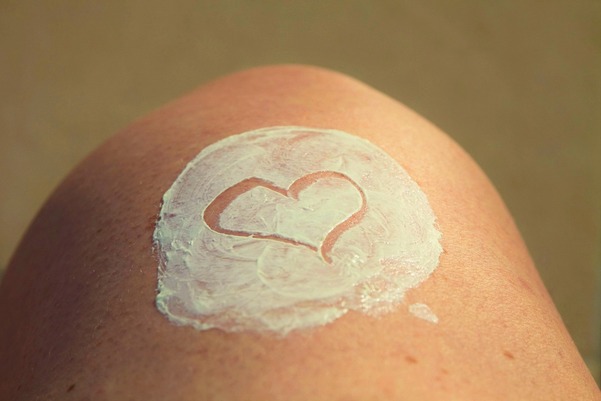
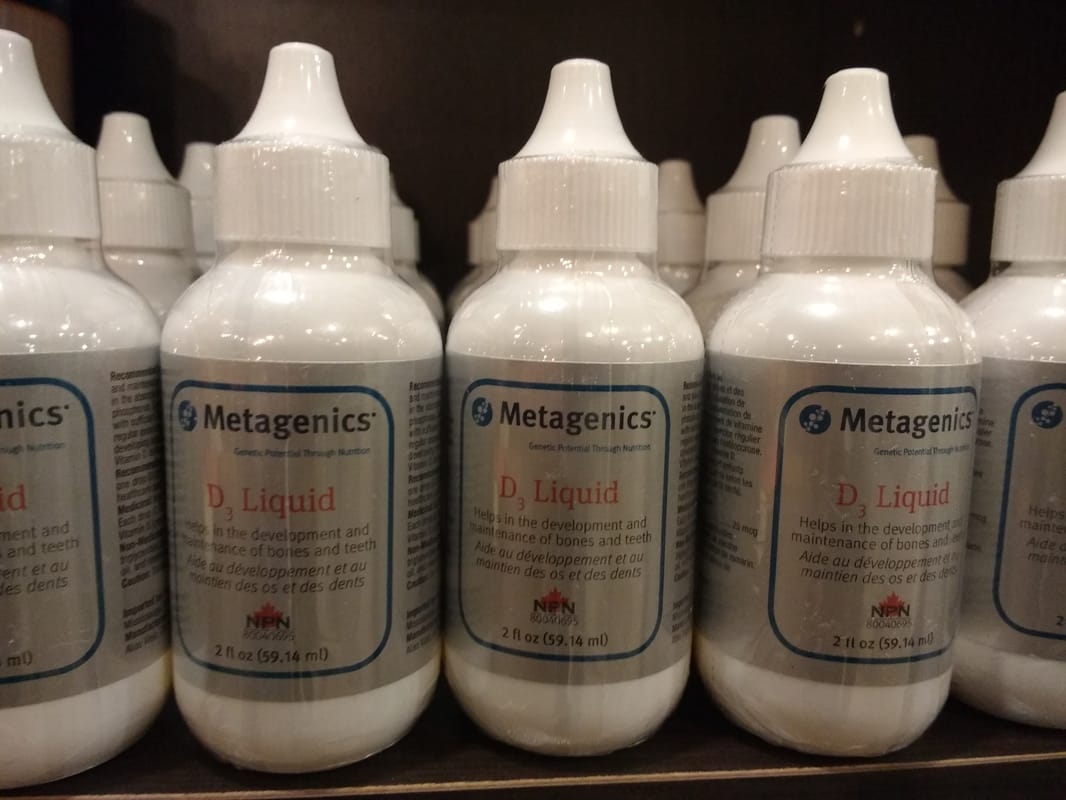
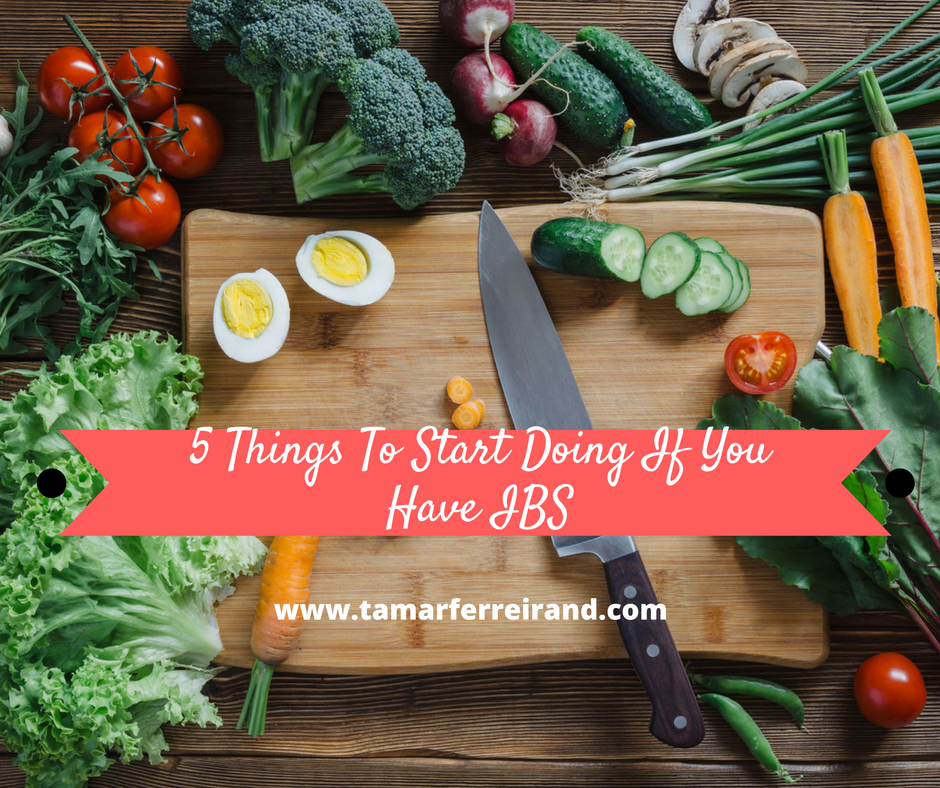
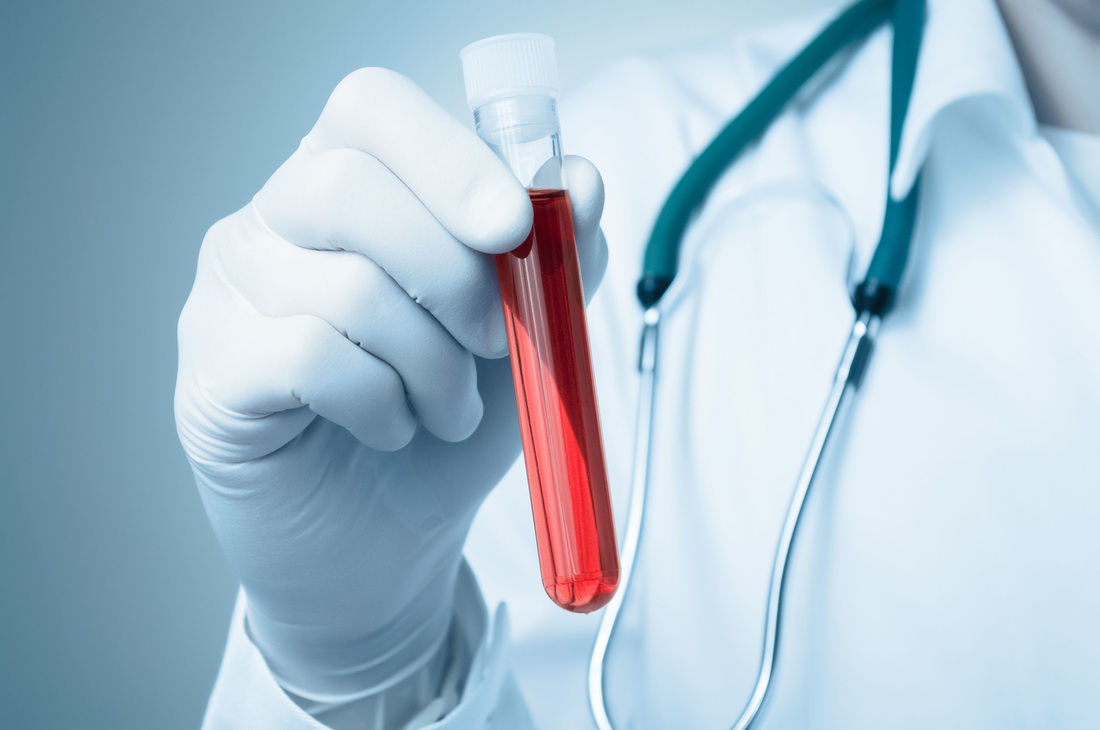

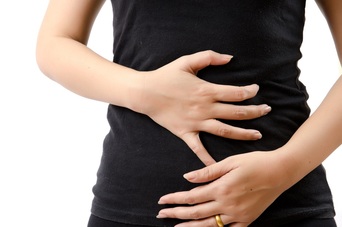



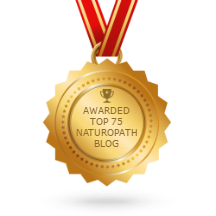

 RSS Feed
RSS Feed